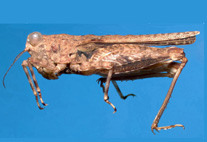Abstract
In this paper we describe Macrobiotus paulinae, a new species of the hufelandi group from the Kenyan highlands. In addition to the traditional taxonomic description, aided with morphometrics as well as light and scanning microscopy imaging, we also provide nucleotide sequences of three nuclear (18S rRNA, 28S rRNA, ITS-2) and one mitochondrial (COI) DNA fragment of the new species. The sequences allowed not only a more accurate description but also provided an independent verification of the taxonomic status of Ma. paulinae sp. nov. Such integrative approach requires a considerable number of individuals and eggs, which we have partially subsidised by employing an in vitro culture of the new species. Our analyses revealed that Ma. paulinae sp. nov. is most similar to Macrobiotus madegassus Maucci, 1993 and Macrobiotus modestus Pilato & Lisi, 2009, however it differs from these species, as well as from all other known species of the hufelandi group, by the presence of seven paired dorso-lateral patches of cuticular granulation and the presence of chorionic filaments growing out of terminal discs of egg processes. Macrobiotus paulinae sp. nov. is an example of a species with a miniaturised buccal apparatus (i.e. with reduced peribuccal lamellae and oral cavity armature, and stylet supports inserted on the buccal tube more anteriorly than in typical Ma. hufelandi group species), and it therefore resembles two recently described two-macroplacoided Minibiotus species: Mi. acadianus Meyer & Domingue, 2011 and Mi. julianae Meyer, 2012. The re-examination of the type material for these two species confirmed that they are equipped with peribuccal lamellae and therefore we transfer them to the genus Macrobiotus, specifically to the hufelandi group.

